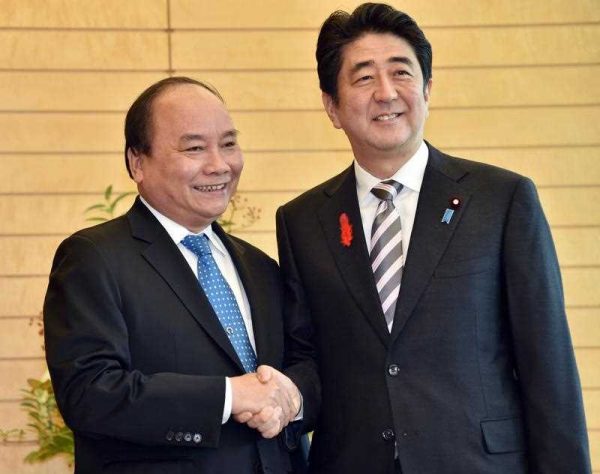This is a result of rising labour costs and ongoing structural reforms in China. In this context, Vietnam appears to have great potential for attracting the interest of foreign firms looking for a destination for their next investment — to become the ‘plus one’. Vietnam is blessed with a young and highly-educated workforce, a sizeable domestic market and geographical advantages. If Vietnam could create the right conditions it could achieve what newly industrialising economies and China have in terms of greater economic development.
In recent years, Japanese firms have been more actively pursuing the ‘China Plus One Strategy’. While the inflow of Japanese FDI into China dropped in 2013, inflows into ASEAN have been increasing over the last decade — now annual Japanese FDI inflows into ASEAN exceed investment in China. According to a survey conducted by the Japan Bank for International Cooperation in 2013, China lost its top place for the first time as a promising destination for investment as perceived by Japanese firms. The top destination is now Indonesia — followed by India, Thailand, China and Vietnam. But this does not necessarily mean that Japanese firms are withdrawing from China: they are simply seeking out new investment destinations while continuing to uncover market opportunities in China.
Vietnam is one of the more favoured destinations for Japanese outward investment. The volume of Japanese investment in Vietnam has been rapidly increasing, particularly since the Japan–Vietnam Economic Partnership Agreement came into effect in 2009. The industries in which Japan invests the most are transportation equipment and electric machinery for the manufacturing sector. Vietnam is the world’s fourth largest market for motorcycles, so Japanese auto makers such as Honda and Yamaha as well as parts and components suppliers have been investing as well. Japanese electronics companies have also increased their investments, partly due to Samsung establishing a mobile phone factory to produce the Galaxy smartphone series. Panasonic is seeking market opportunities for home electric appliances and regards Vietnam as an important part of a broader emerging markets bloc. As for non-manufacturing sectors, significant investments have been made in the financial and insurance industries.
As Vietnam strives to create a stable and conducive environment for foreign investment, certain obstacles stand in the way. These include a lack of supporting industries, inadequate infrastructure, unstable macroeconomic conditions and a lack of transparency in regulatory and legal systems. Among these challenges, the lack of supporting industries and unstable macroeconomic conditions are closely interconnected. Vietnam has followed the typical pattern of East Asian production by engaging in intra-regional trade in primary and intermediate goods and exporting final goods to advanced markets. But exporting firms in Vietnam are mostly foreign companies that procure their raw materials and intermediate goods from abroad. There is little value-chain integration between large exporting firms and domestic supplier firms. As a result, Vietnam’s increased manufacturing exports do not contribute much to alleviating the current account deficit. Nurturing competitive domestic suppliers is therefore a key challenge facing Vietnam.
Japanese small and medium enterprises (SMEs) seeking business opportunities abroad could find themselves in win-win relationships with Vietnam. Japanese SMEs face various challenges in the domestic business environment: shrinking domestic markets due to an ageing population, large firms that contract with SMEs shifting overseas, and increasing competition with emerging foreign companies, to name a few. After the global financial crisis in 2008, Japanese SMEs accelerated their migration abroad to survive.
Vietnam should promote measures to accommodate these SMEs from Japan. Vietnam could benefit from the technological diffusion brought by Japanese FDI. Japanese SMEs are already looking to Vietnam. One such initiative is the Kansai Supporting Industry Complex built in the Long Duc Industrial Park in Dong Nai Province in 2013. The complex is designed to support and facilitate the establishment of foreign subsidiaries by SMEs from the Kansai region in Western Japan. Vietnam’s successful accommodation of Japanese investment will help domestic supporting industries grow and, in turn, Japanese SMEs will be able to enjoy local partnerships and access to local markets.
Both Japan and Vietnam are also involved in the Trans-Pacific Partnership (TPP) negotiations. When concluded, the TPP will help promote trade and investment, and it will also compel domestic economic and industrial structural changes. This will be difficult, particularly for developing countries like Vietnam that will need a process for strategically upgrading their industrial base.
In this context, Japan and Vietnam will be important partners. Both countries would benefit from closer economic relations and greater cooperation.
Kensuke Yanagida is Research Fellow at the Japan Institute of International Affairs, Tokyo.

